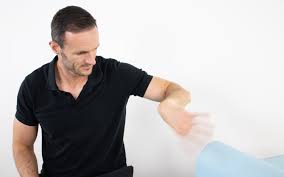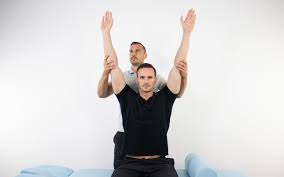Special test for the neurological dysfunction of the wrist joint
When it comes to assessing neurological dysfunction of the wrist joint, there are several tests that can be performed to help evaluate its function and identify any potential issues.
Neurological dysfunction is mainly representative of a particular nerve lesion if it is positive, but they do not lead to the problem if it is negative.
They may be negative 50 % of the time, or more when the situation lives with the symptoms varying throughout the day & daily.
Electrodiagnostic tests are more definitive.
A list of special tests for neurological wrist joint dysfunction is:
- Egawa’s sign
- Flick maneuver
- Froment’s paper sign
- Hand elevation test
- Ninhydrin sweat test
- Wrinkle test
Table of Contents
Egawa’s sign

Purpose = This Egawa’s sign is used to study for ulnar nerve palsy.
Technique =The position of the patient is in a sitting position.
The patient flexes the middle digit and then alternately shifts the finger radially & ulnarly.
If the patient is unable to do Egawa’s sign, their interossei may be affected.
Result = If there may be a positive sign, it is indicative of ulnar nerve palsy.
Flick maneuver:

Purpose = This flick maneuver is used to evaluate the paresthesia in the hand.
Technique = The position of a patient in a sitting or standing position for the test.
The patient is complaining about paresthesia in the hand in the median nerve diffusion.
The patient is instructed to shake their hands firmly or flick their wrists.
Result = If the symptoms go away after flicking or shaking hands, the test might be considered a positive test.
Froment’s paper sign:

Purpose = This Froment’s paper sign test is used to evaluate the paralysis of the ulnar nerve.
Technique=Position of the patient is in a sitting position.
The patient tries to grasp a piece of paper between their thumb and index finger.
The terminal phalanx of the thumb flexes as the examiner (or therapist) tries to draw away from the paper because of adductor pollicis muscular paralysis, which may be a sign of a positive test.
Result=The thumb’s metacarpophalangeal joint can be identified as a positive Jeanne’s sign if it is hyperextended at the same time.
Both tests, if positive, they are indicative of ulnar nerve paralysis.
Hand elevation test:

Purpose=The median nerve’s distribution is examined with this hand elevation test.
Technique = The position of a patient is in a sitting or standing position for the test.
The patient raises both hands over the head and holds the position for at least 3 minutes.
Result=The median nerve distribution has to recreate the symptoms in less than two minutes for the test to be considered as a positive test.
Ninhydrin sweat test:-
Purpose = This ninhydrin sweat test is assessed to study the nerve lesion in the hand.
Technique = The patient’s hand is cleaned thoroughly and wiped with alcohol.
The patient then waits 5 to 30 minutes with the fingertips, not in touch with any surface.
This allows a period for the sweating method to ensure.
After that waiting time, the fingertip is stuffed with moderate force against the good-quality bond paper that has not been connected.
The fingertips are kept in place for 15 seconds and drafted with a pencil.
The triketohydrindenespray reagent is then sprayed over the paper, and it is allowed to dry.
The sweat areas stain purple.
Result = If the change in color from white to purple does not occur, it is considered a positive test for a nerve lesion.
The reagent must be set if a permanent form is required.
Wrinkle test:

Purpose = This wrinkle test is used to evaluate the wrinkling of the wrist joint.
Technique = The patient’s fingers are placed in warm water for about 5 to 20 minutes.
The examiner [ therapist ] then dismisses the patient’s finger from the water & watches whether the skin over the pulp is wrinkled.
Normal fingers exhibit wrinkling, but if they may be denervated then do not.
Result=The test is only valid during the first several months following an accident.
FAQ
Purpose = This Egawa’s test is used to evaluate the ulnar nerve palsy.
The flick sign is more of a patient record finding than it is a special test. In basic terms, you want to know if the patient flicks the hand that is hurting in an effort to relieve paresthesia and pain. Imagine shaking down a thermometer with your hand.
This test is performed to determine whether there is an ulnar nerve injury. Bending the thumb while holding a piece of paper suggests ulnar nerve damage. The anterior interosseous nerve supplies the muscle fibers of the flexor pollicis longus.
The Froment sign is a complaint of weaker pinching, typically between the first and second fingers. This indication may occasionally be obtained by asking the patient to hold a piece of paper between their thumb and index finger.
The elevation is essential for limb injuries to help reduce pain and edema. In fact, it helps in the removal of extra fluid from the area of your injury, which could reduce discomfort and speed recovery. You should elevate the leg above the level of your heart in order to achieve the optimum outcomes from elevation.







